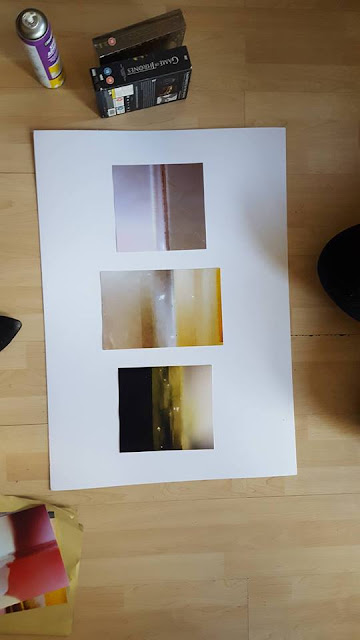I started off with 8 images and played around with the layout, i didn't measure them out because i was just trying to figure out how i wanted them...
The idea was that i would have a fork then full meals that were collaged then a knife and the three on another piece of mount board, the teeth then the two snacks. BUT i didn't like the knife and fork, i thought they made it look cheesy? or just not right to me... i wanted to go back to the idea of these being landscapes in a way and decided to play around with them more!
I liked these images but i changed them around, i liked that the line follows through the middle. What i liked about it was that you can flip it around and it works from all angles so i decided to move the middle image to the outside and i changed the teeth image for one of the melon.
I liked the dark and light contrast on each side so that you can see it from different angles and that contrast will always be there. I will need to mount these tomorrow as i only have one mount board.
I did mount these other ones after i decided i liked the image, again i liked the line following through the middle.
I liked the dark and light contrast on each side so that you can see it from different angles and that contrast will always be there. I will need to mount these tomorrow as i only have one mount board.
I did mount these other ones after i decided i liked the image, again i liked the line following through the middle.
Final images











Comments
Post a Comment